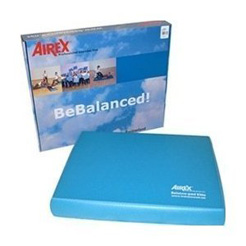What am I supposed to do, drive 3/4 of a car?

The hip labrum is a cartilaginous ring that extends effectually the outside of the hip socket every bit seen in the illustration below. Hip labral tears manifest every bit precipitous, nagging pain deep in the hip or the groin areas. Pain associated with a hip labral tear may also refer down the thigh towards the knee. Auto accidents and chronic repetitive stress imposed from years of sports or yoga are often root causes of hip labral tears. Women appear to exist much more susceptible to this type of injury.
Hip labral surgery is a comparatively new orthopedic procedure that seeks to repair the labrum and thus stabilize the hip socket. This type of surgery is becoming less invasive from twelvemonth to year: the patients that we see now have very small surgical scars and fewer mail-operative precautions.
Precautions & Expectations in Regards to Hip Labral Repair Surgeries
 1. Almost all post-operative labral repair patients are "non-weight bearing" for a minimum of two weeks following the surgery. Patients apply crutches during this time frame. In terms of rehabilitation, I inquire patients to lie flat on a bed or on the floor for a catamenia of time each day that he or she is using crutches. The purpose of this is to allow the hip flexor muscles to relax into a neutral position, every bit suspending 1's leg while using crutches does require prolonged flexion of the hip.
1. Almost all post-operative labral repair patients are "non-weight bearing" for a minimum of two weeks following the surgery. Patients apply crutches during this time frame. In terms of rehabilitation, I inquire patients to lie flat on a bed or on the floor for a catamenia of time each day that he or she is using crutches. The purpose of this is to allow the hip flexor muscles to relax into a neutral position, every bit suspending 1's leg while using crutches does require prolonged flexion of the hip.
2. Swelling in the hip expanse is an inevitable upshot of surgery and causes the surrounding muscles to "shut down." Isometric exercises are typically started shortly later surgery in order to minimize the negative effects of swelling. The gluteus maximus, gluteus medius, hip adductors, and hip flexors can all exist trained gently through isometric do. There are many resource on the Internet that can atomic number 82 you in the right direction in terms of isometric exercise teaching.

iii. Pain in the lower dorsum and pelvis post-obit labral repair surgery is common considering of muscular imbalance. The spine in general does not handle disproportion well: if one leg cannot have weight well for a prolonged flow of time, the lower back and pelvis are loaded also heavily from the stronger side. In order to minimize this effect, in rehabilitation we encourage the patient to work on idealizing the mobility of the lower back and pelvis through a series of exercises (run across Why all the Fuss about the Gluteus Maximus and The Clamshell Exercise). Information technology also goes without saying that the sooner the patient regains his or her force and weight bearing capacity on the surgical side, the meliorate the lower back and pelvis volition feel.

We have two (2) exercises on our "media" tab under the abdominal department: "pelvic clock" and "pelvic control" are good ideas in terms of restoring lower dorsum and pelvic alignment. The countersign to get into the exercises is "patient."

Great for ankle stabilization grooming! Utilize it for single leg residuum, air squats, or as a way to cushion your knees while performing exercises in a kneeling position.
4. Healing from this surgery mostly takes a long time! Information technology is not uncommon for patients to experience discomfort six months after the fact. The of import affair to remember is that if you notice positive differences from week to week (or month to month), y'all are going in the right direction! We will typically ask patients to record the distance that they tin walk before hurting sets in then employ this as a baseline for comparison.
5. With hip and knee surgery in particular, people have the long-term tendency to develop habits that keep them from maintaining full weight and strength through the leg. Avert crossing your surgical leg over the uninvolved leg when seated, and when standing, strength yourself to comport your weight equally through both legs. The body will often unconsciously endeavor to default over to the non-surgical side considering information technology has learned to do so. Initial postal service-surgical weight bearing precautions are a necessary evil: people need to re-teach their bodies to accept weight every bit, and this may takes months of practice.
PhysioDC Podcast: Experts Talk Nigh The Hip
Andrew Wolff, Physician (orthopedic surgeon) and Dana Logan, MSPT (concrete therapist specializing in hip rehabilitation) discuss everything that you demand to know about advances in hip surgery and conservative management. This episode is a must for anybody wanting to know more than about FAI, hip labral surgery/reconstruction, and rehabilitation of the hip.
Visit our PhysioDC podcast page.
Source: https://www.physiodc.com/hip-labral-repair-rehabilitation-what-to-expect/
Post a Comment for "What am I supposed to do, drive 3/4 of a car?"